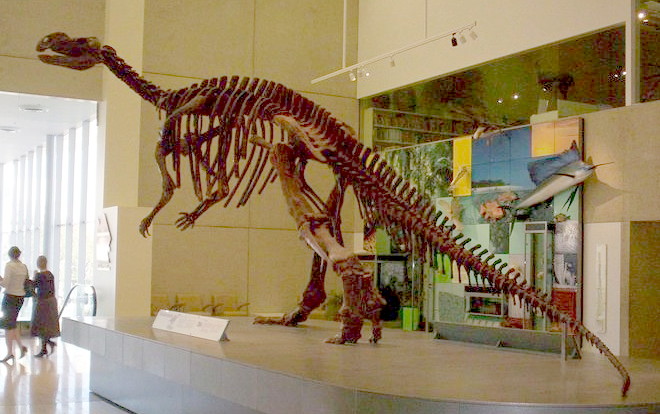Canada News
Dinosaur remains largely unnoticed at Sheridan College
SHERIDAN, Wyo. — When a bone or fossil is found at the Sheridan College dinosaur quarry, the work is just getting started.
First, the remains must be exposed from the surrounding area, so they are easier to move. Once they are taken out of the ground, a plaster cast is put around the bone or fossil for stabilization.
“If you don’t do that, and try to dig it up and put it in the back of a pickup truck or something, by the time you get to the college, it’s going to be in 500 pieces,” said Mike Flynn, former Sheridan College geology instructor and current curator of geology at the Museum of Discovery.
According to Flynn, most of the remains are as fragile as a silverware China teacup because they are more than 100 million years old. They usually need about a week to dry, and are then ready to be cut out from the cast, usually by a hacksaw or autopsy saw.
The materials have to be treated extremely carefully, and are cut out by someone with a geology or paleontology background. Because there are only a few people connected with the college who meet this requirement, some of the remains are in a cast for several months.
When they are taken out of the cast, the remains are analyzed in the Museum of Discovery prep lab. They are then thoroughly catalogued by size, weight, genus type and paleontology number, among other categories.
Most of the cataloguing is done by Bill Matteson, a part-time college employee who was previously a student of Flynn’s and often participated in quarry excavations.
Some of the more sensitive remains go into storage in a locked steel container.
Flynn said there are about 300 different bone specimens stored at the college. The museum is a federal repository, so the remains must be in a clean, dry and secure location, per state government regulation.
Despite housing some of the best and rarest dinosaur fossils in the country, the Museum of Discovery goes mostly unnoticed, The Sheridan Press reported . The museum does not have a full-time curator or regular hours, and is usually locked throughout the week. It also recently had to make space for a police science classroom, which takes up part of the interior display area.
Part of the reason for the decrease in interest is Flynn’s retirement. He retired in 2004, then came back for a year, before stepping down again in 2014. Paleontology was his passion. When Flynn was an instructor, he often took his students to the quarry, about an hour’s drive away, to excavate bones and fossils. Student also did prep work back at the museum. Many volunteers accompanied them on their outings, including other faculty members occasionally.
Sheridan College geology instructor Thomas Johannesmeyer simply has different priorities. He takes students out to quarry usually once per year, but they don’t excavate anything. Johannesmeyer also shows fossils to his classes so they can understand basic identification techniques, but is generally more interested in mineral studies.
Johannesmeyer said he brings a more practical approach in his teaching style.
“Paleontology is geology’s hobby,” he said. “It doesn’t generally pay the bills, but it sure is fun to do sometimes. I’m thinking the paleontologists of the world would probably want to kill me if they heard me talk like this.”
Because of the lack of museum visitors, there have been discussions about moving some of the artifacts to other campus buildings, Johannesmeyer said, which would increase public exposure to the 150-million-year-old artifacts.
Dave Nicolarsen, a volunteer who does maintenance work in the quarry and museum, said he is working with the Sheridan College Foundation on that moving process. It will likely begin this winter, beginning with a few display cases. The plan is to put the displays in most campus buildings and make brochures so people can go on a small tour around campus.
Nicolarsen said he is not yet sure which buildings they will go in. He said it is important for the college to store the remains because most of the artifacts discovered in the state have been transported to the east coast or Europe, and keeping them local provides learning opportunities for interested students and adults.






















